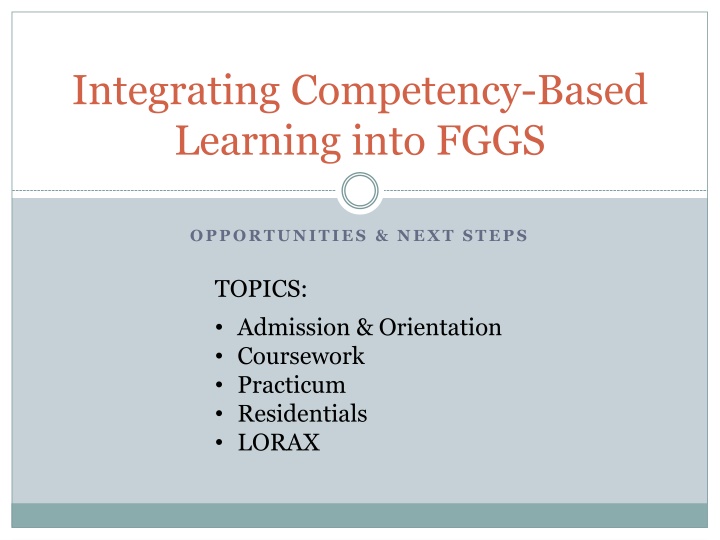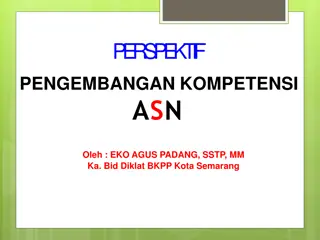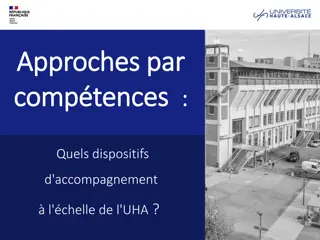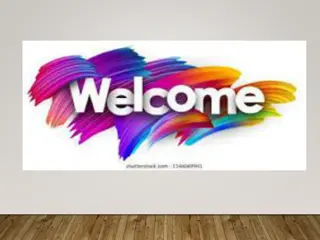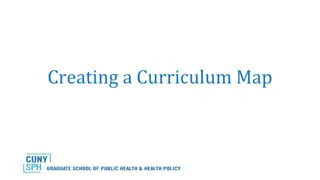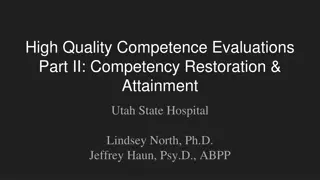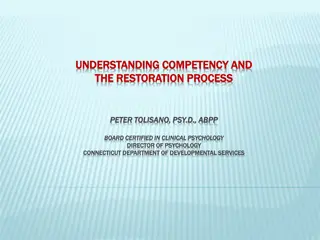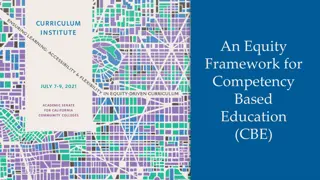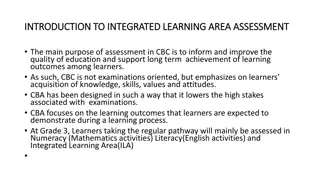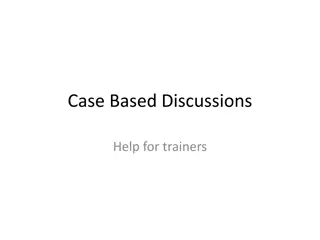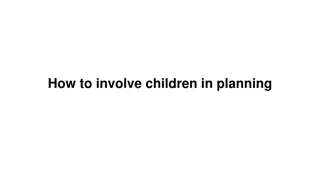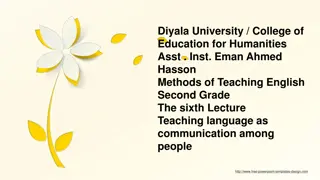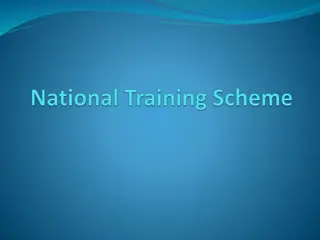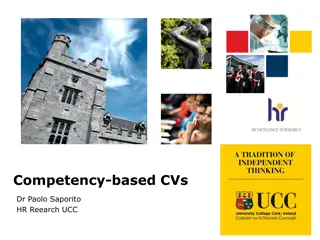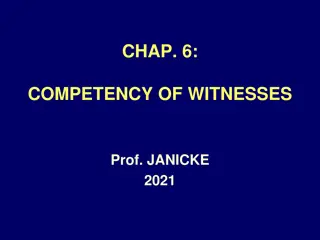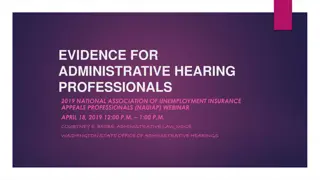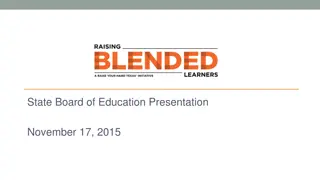Integrating Competency-Based Learning into FGGS Opportunities: Next Steps
This resource delves into the integration of competency-based learning into FGGS, covering topics such as admissions, orientation, coursework, practicum, and more. It explores opportunities and outlines next steps to enhance learning experiences through frameworks, partnerships, and artifact taxonomy development.
Download Presentation

Please find below an Image/Link to download the presentation.
The content on the website is provided AS IS for your information and personal use only. It may not be sold, licensed, or shared on other websites without obtaining consent from the author.If you encounter any issues during the download, it is possible that the publisher has removed the file from their server.
You are allowed to download the files provided on this website for personal or commercial use, subject to the condition that they are used lawfully. All files are the property of their respective owners.
The content on the website is provided AS IS for your information and personal use only. It may not be sold, licensed, or shared on other websites without obtaining consent from the author.
E N D
Presentation Transcript
Integrating Competency-Based Learning into FGGS OPPORTUNITIES & NEXT STEPS TOPICS: Admission & Orientation Coursework Practicum Residentials LORAX
Admissions & Orientation More explicit questions in application: Specific skills and knowledge they want to gain Existing skill-sets so we know where they are Entrance survey to create student profiles More robust community statement Focusing on who may be stakeholders in your education Orientation Creating a Student Learning Vision/Plan
Coursework OPPORTUNITIES AND NEXT STEPS
Coursework Improving course flexibility Increase opportunities for community engagement as part of coursework Increasing diversity of assessment methods Portfolio approach Assignments can be translated into learning activities w/ accompanying learning artifacts Introducing electives Option to opt up if student has previous experience in a field or class Other online courses with partner institutions
Taxonomy of Artifacts Portfolio Academic Applied Reflective practice Assignments Research Programmatic Administrative Carry out CLTS Designing curriculum Education campaign Journaling Business plan Training Literature review Presentations Focus groups Transcripts & Analysis Recording of radio program PowerPoint/ video Written/ video Video of CLTS Written Written
NEXT STEPS Developing framework/partnerships for outside classes (Articulation Agreement) Developing taxonomy of artifacts Introducing language in Academic Catalogue, Faculty Handbook, Assessment Handbook Faculty development workshop on: Learning Activities Learning Artifacts Assessments (how to translate an artifact into a grade)
Student learning plan Identify learning objectives General advisor Advising Team Practicum Semester 1 Foundation for self- directed learning Advising team identifies learning activities Literature reviews/background research Framed as a concentration or a skill set to be developed Semester 2 Student learning plan Carrying out activities in the field Developing learning artifacts (documentation) Increased input from local advisors, alumni, professionals in field Semester 3 Self-directed learning (including best practice documents, video tutorials, internships) Synthesis and final report Self assessment, peer assessment, advisor assessment Semester 4
Advising Team General Advisor General advisor: Orients student, acts as reference Thesis advisor Alumni advisor Thesis advisor More specified, research-oriented Alumni advisor Perspective from alumni on practicum Local advisor Local advisor Access to local resources, advice
NEXT STEPS Articulate the idea of an advising team with guidelines about selecting primary advisor Moving advisor selection earlier Framing the practicum as opportunity to develop and demonstrate mastery of a set of core competencies (that reflect learning objectives) Emphasizing producing evidence of learning through research OR application
Residentials Residentials moved earlier in the semester Allow more time for students to practice what they learn at home Each student develops a take home for each residential Something that they can take back to their communities/ organizations/ colleagues Can be presentation, video, booklet, etc. Serves as learning artifact for residential
Financial considerations Increasing evidence base of effectiveness (for accreditation and donors) Look for small grants for Faculty Development, providing tools for students (audio recorders, flipcam, etc) Development of Learning Repository (next section)
Digital Repository of Learning Evidence Previous learning artifacts Online platform Some public (for donors/ future students to have access to) Potential learning artifacts Previous practicum Some internal (for faculty and students to reference) Source of evidence and examples Database
Learning Object Repository And eXchange LORAX we too speak for the trees
SELF ASSESSMENT PEER ASSESSMENT FACULTY ASSESSMENT
